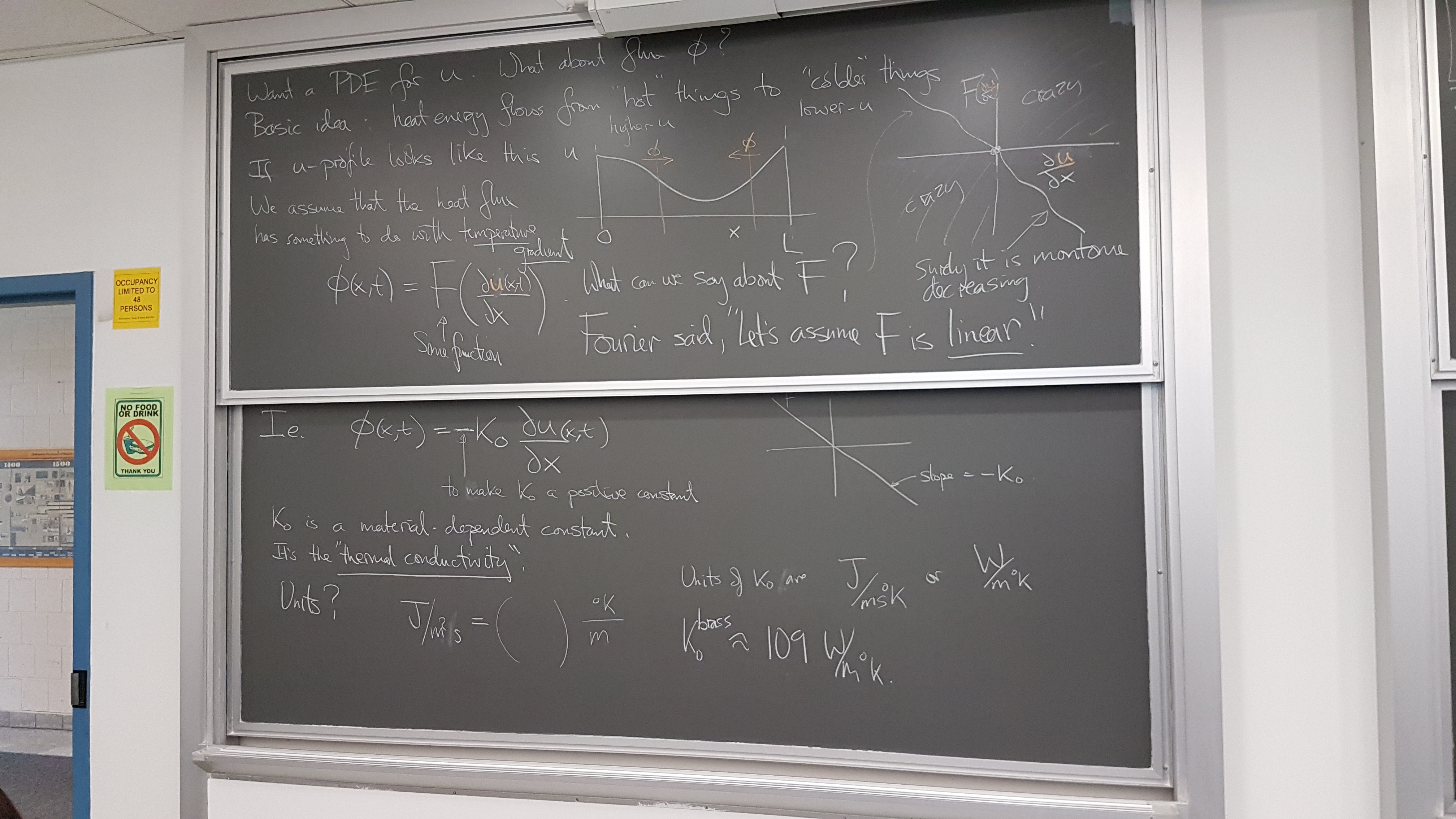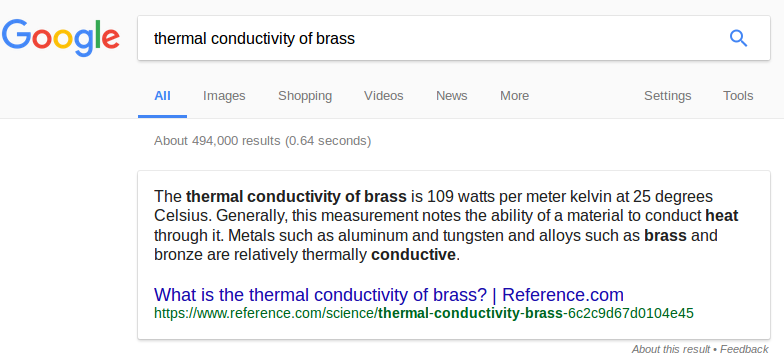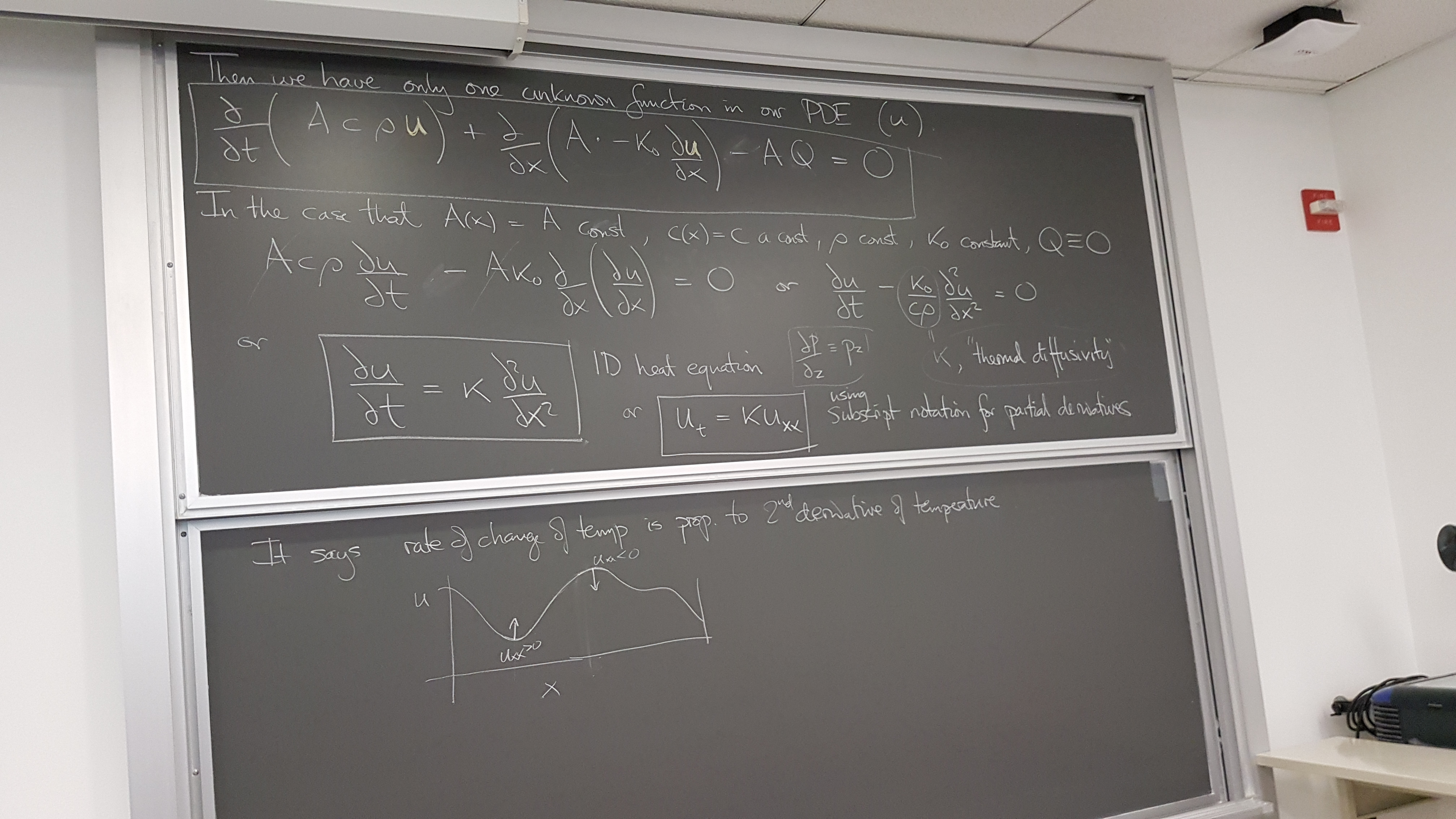418 Survey of PDE
Contents
Day 01
1.2 1D heat conduction
heat and thermal energy, agitation
conduction (convection)
simplest case we can think of: slender rod
thermal energy density e(x,t)
Energy
units Joule (J) examples: mgh, 1Ws, 1 Amp across 1 Volt for 1 sec
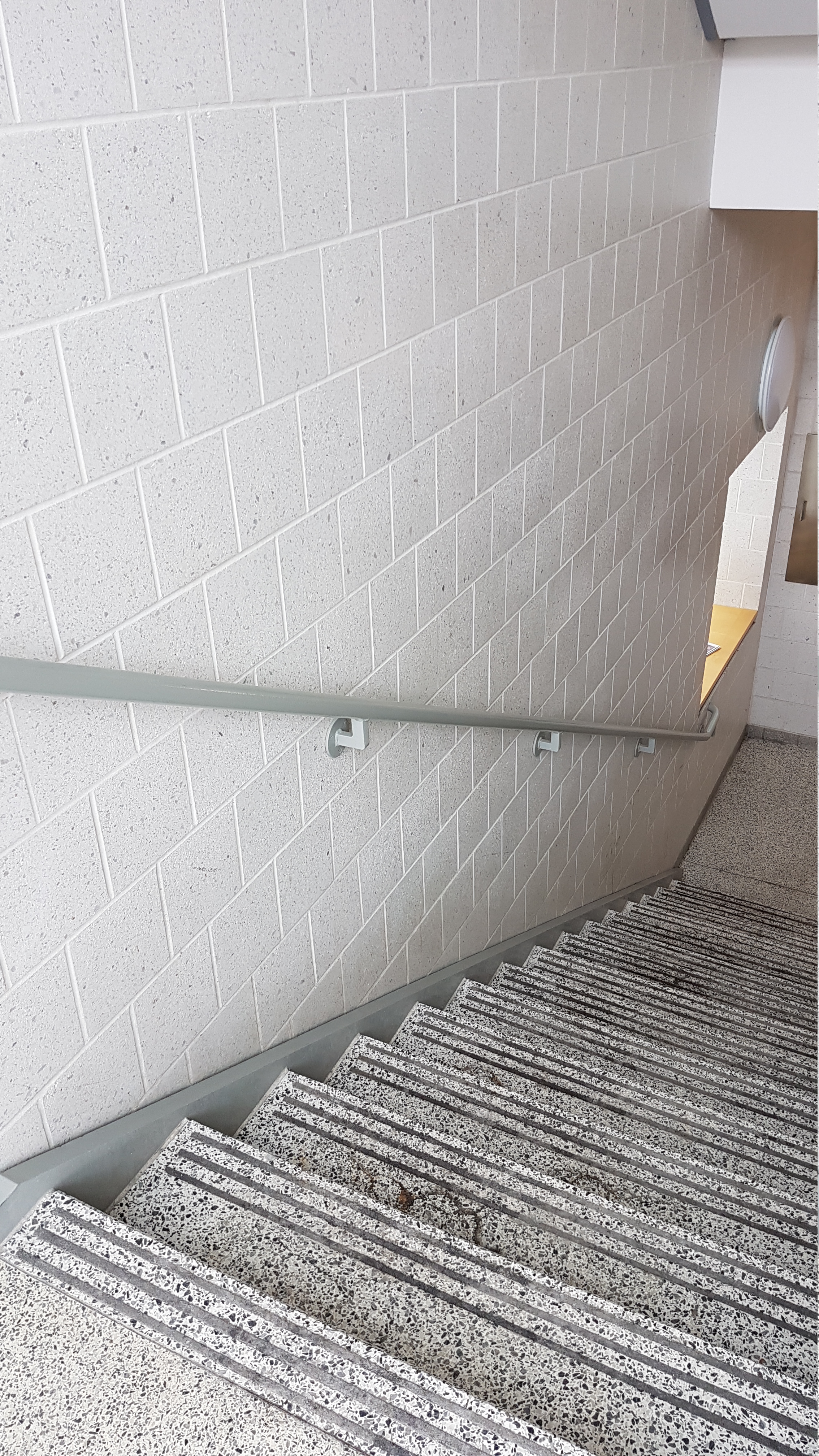

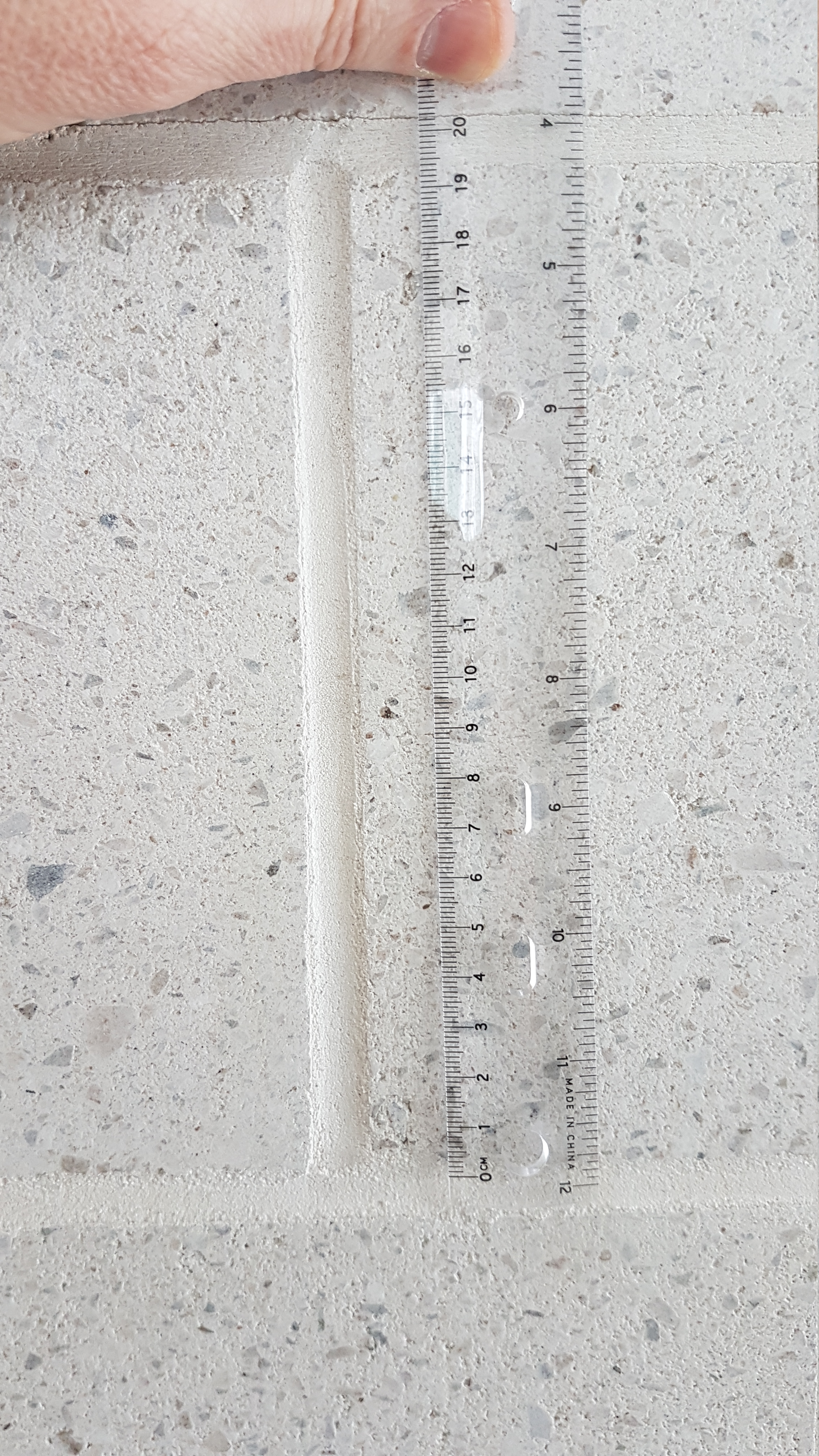
what happens in a chunk over time
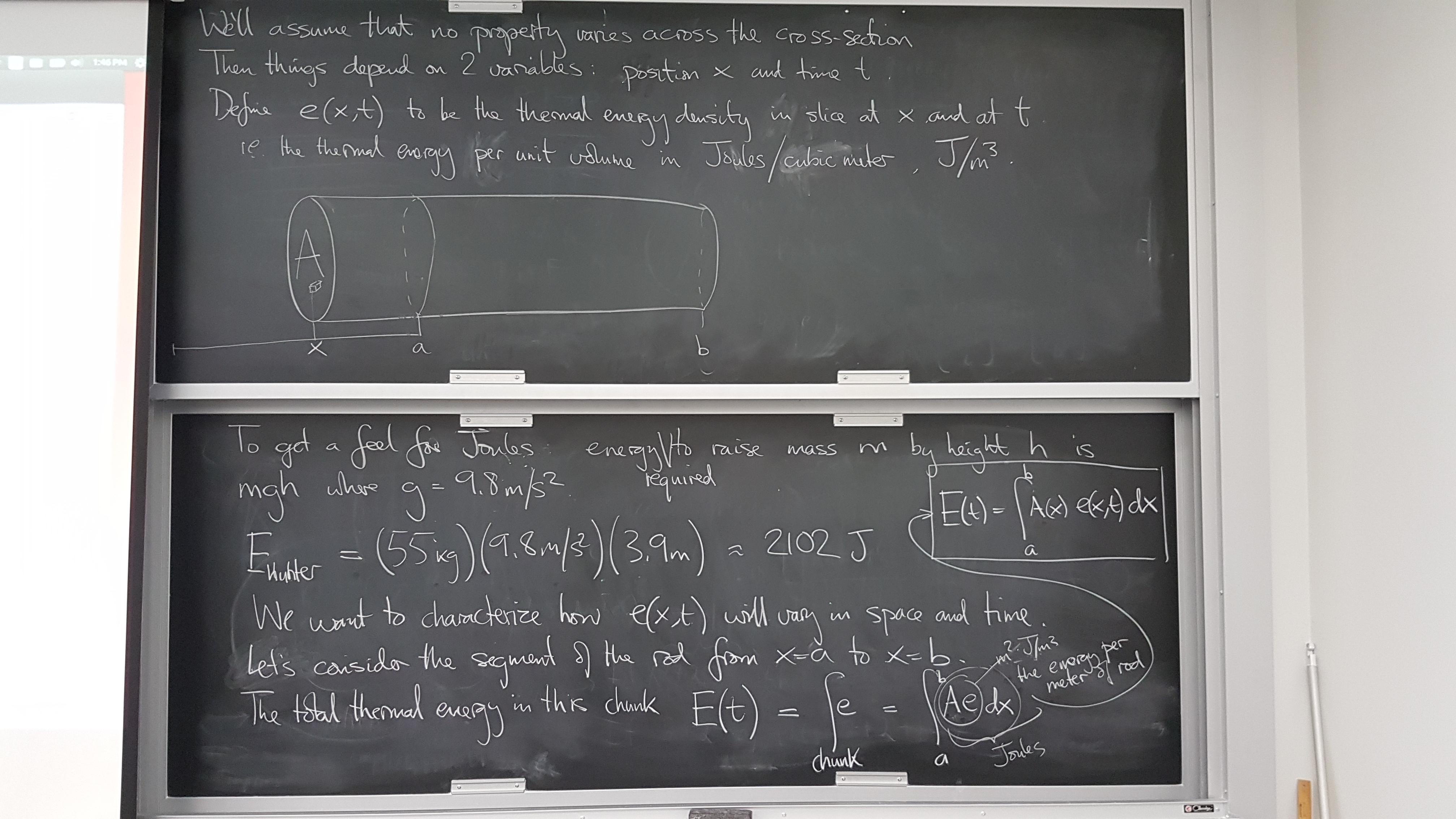
Conservation law
conservation of energy, heat flux φ(x, t)

conservation law in terms of e and φ
all as integral
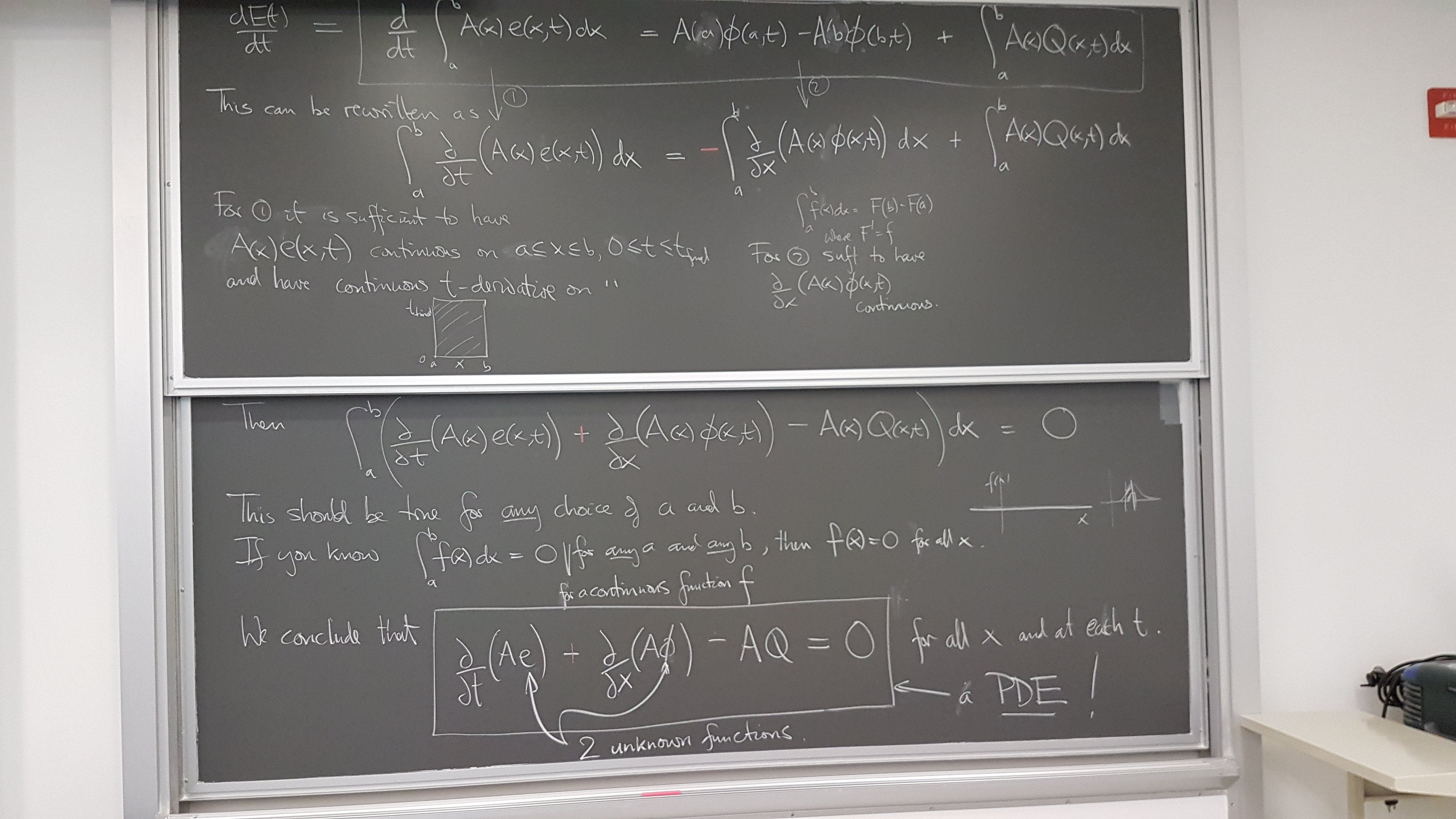
a snag with energy density: temperature [neglected to take board photo]
Objects of two different materials in equilibrium with each other will generally have different energy densities (think chunks of steel and styrofoam). This leads us to invent a new measure of thermal energy called temperature such that "temperatures" of objects in equilibrium have the same value.
Got to here, Jan 31, 2017.
Day 02
Objects of two different materials in equilibrium with each other will generally have different energy densities (think chunks of steel and styrofoam). This leads us to invent a new measure of thermal energy called temperature such that "temperatures" of objects in equilibrium have the same value.
Temperature
volumetric heat capacity
specfic heat capacity
absolute zero
What is the thermal energy content of this brass rod (relative to absolute zero)?

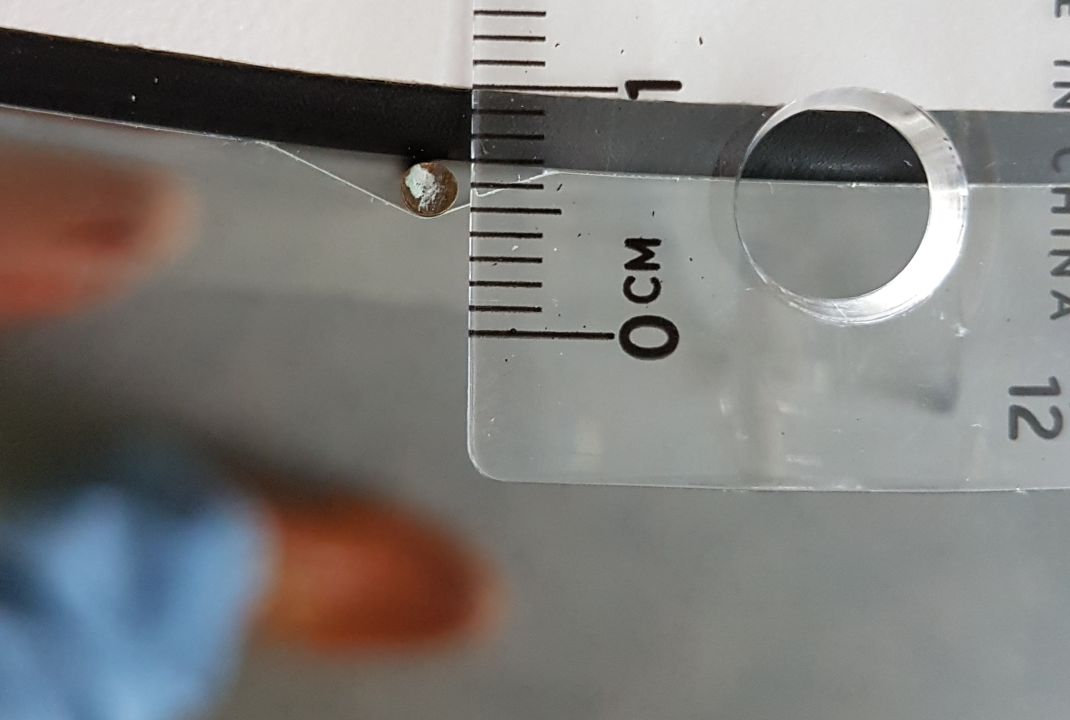
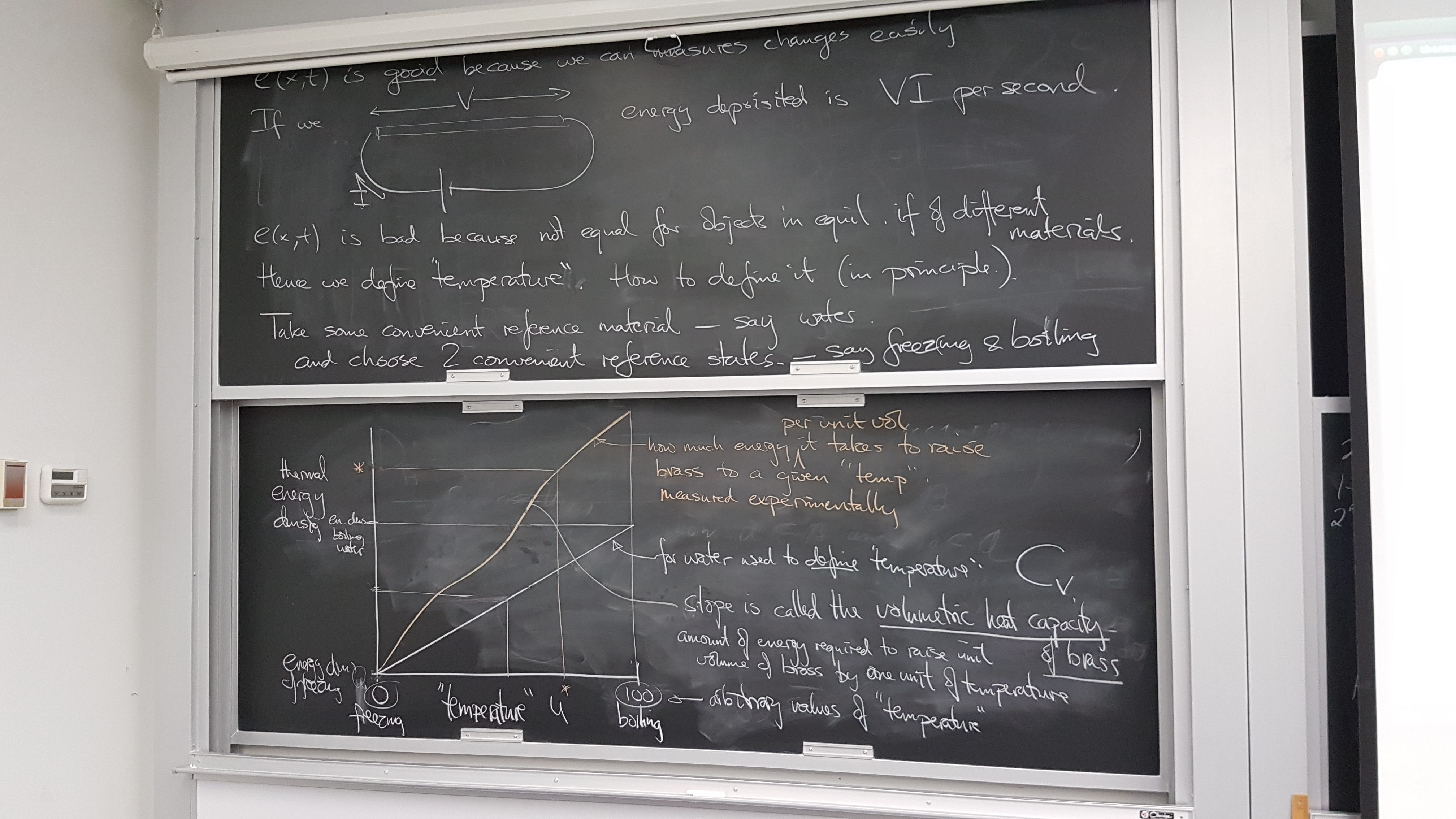


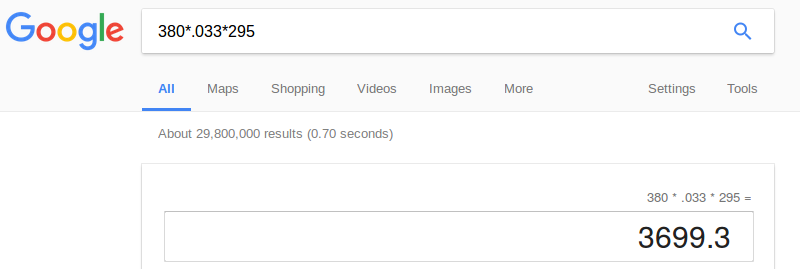


Fourier's "Law" (approximation)
Heat energy flows from hot to cold - let's linearize in the temperature gradient!
